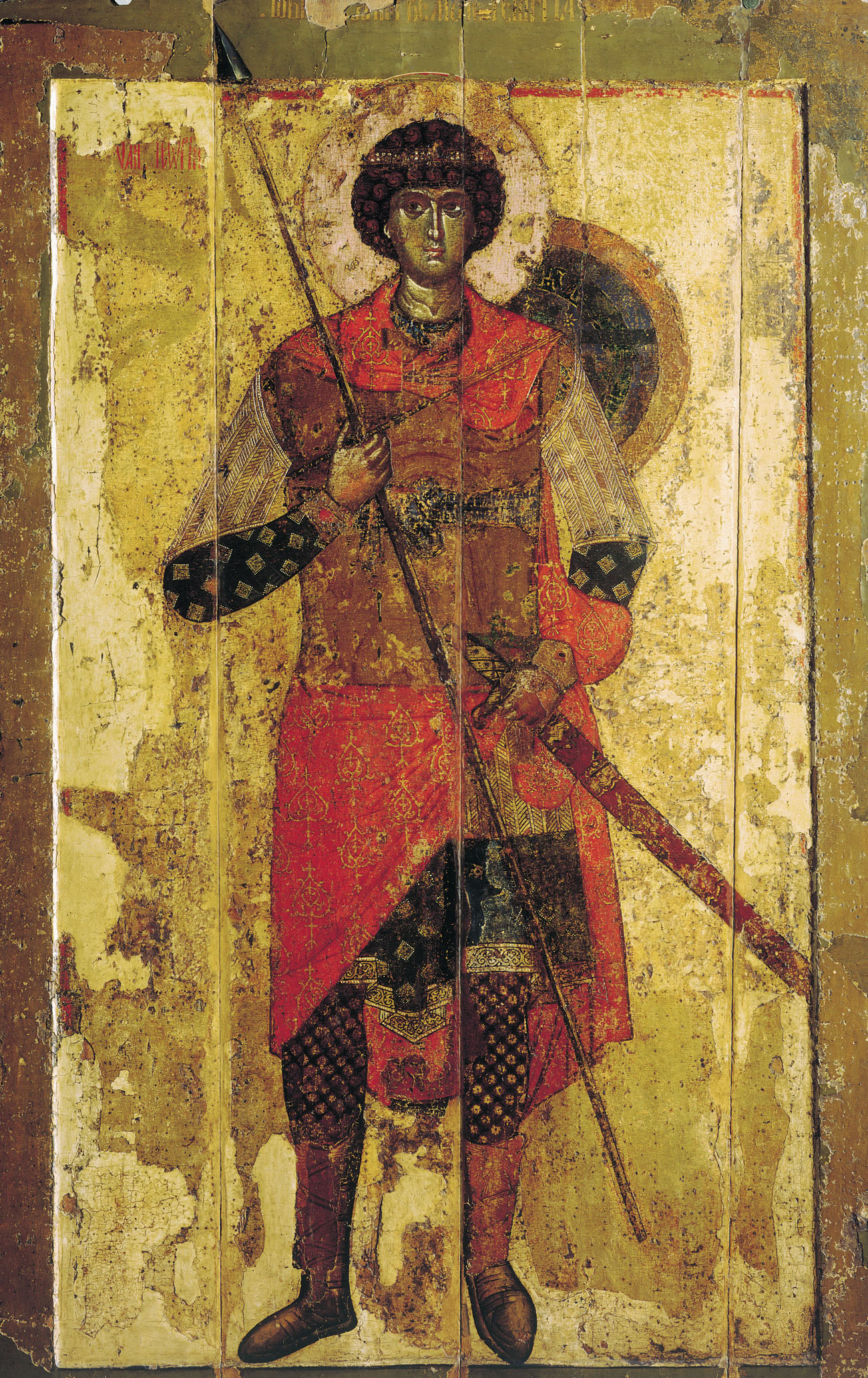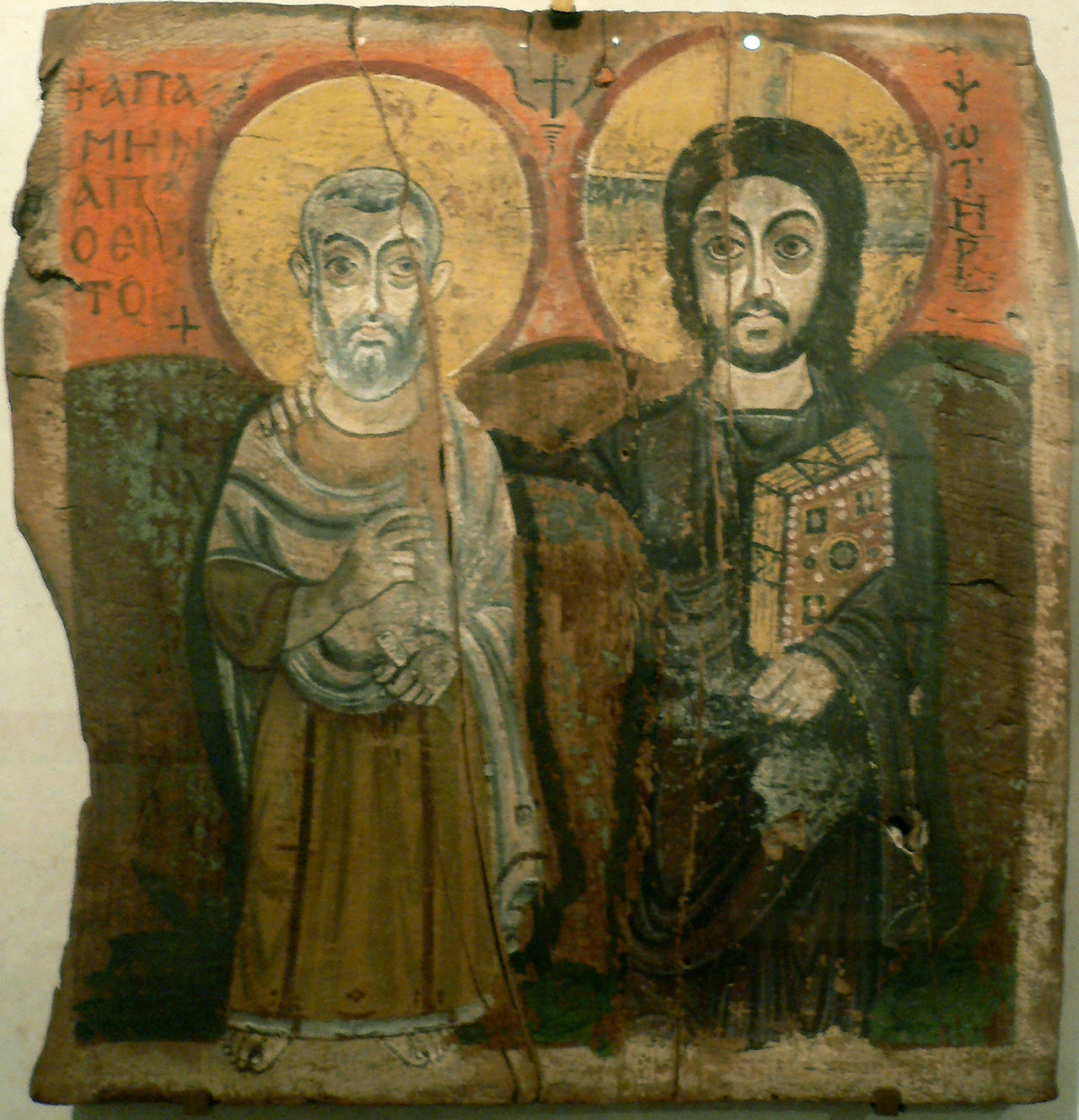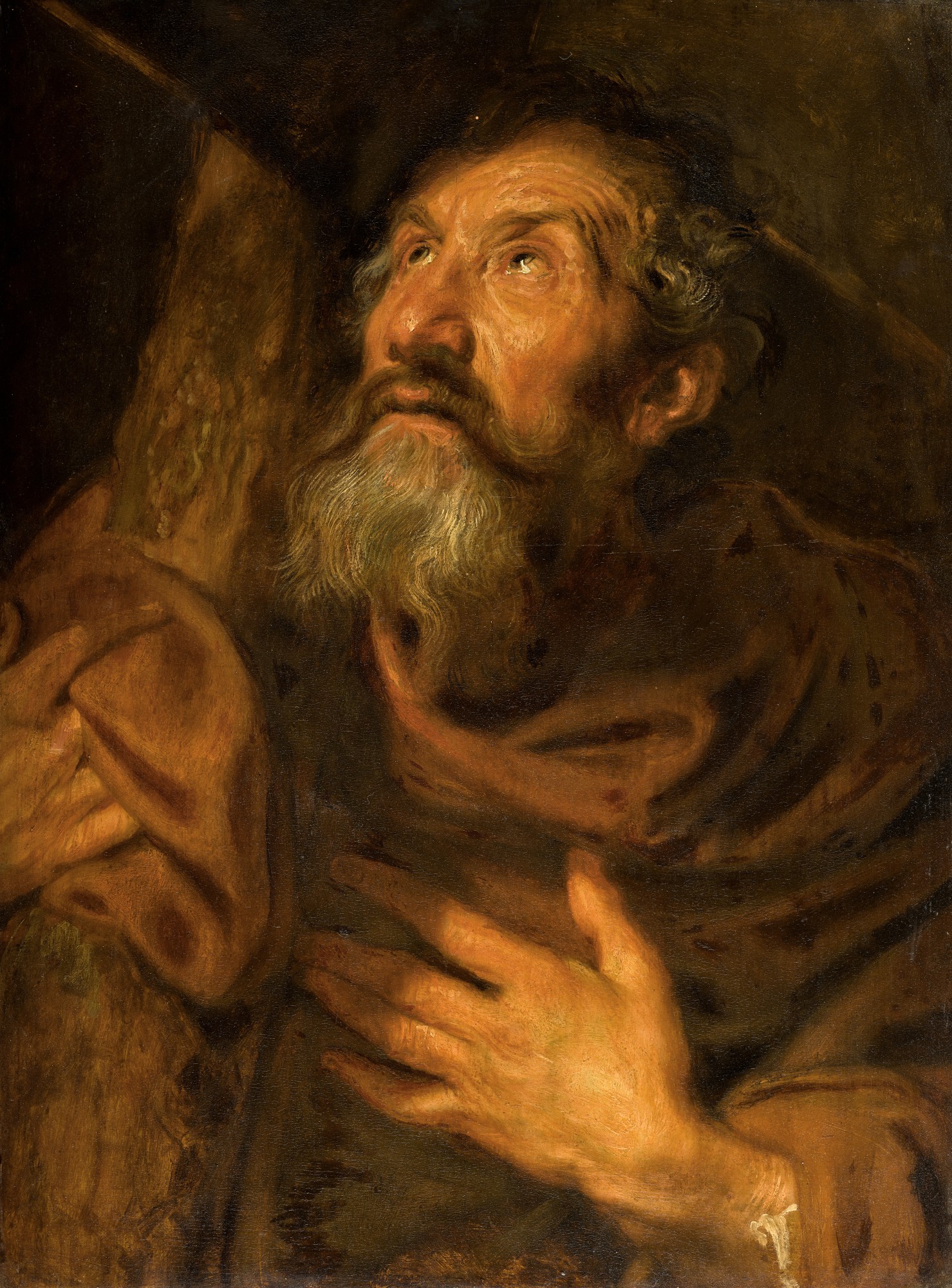On the 28th of November the Nativity Fast begins and lasts forty days
Augustine Sokolovski, Doctor of Theology, priest
In November, the last month of autumn, when winter is about to come, and the year rushes to its end, the Church honours the memory of some wonderful saints. Among them are the great witnesses of the faith of Christ of the early Church, Sts George and Menas. Commemorating them, the Church, as God’s people and the community of the faithful, prepares for the celebration of the Nativity of Christ. Indeed, in late November the Nativity Fast begins in Orthodoxy. It lasts exactly forty days and ends exactly on Christmas Day.
Saint George
On the 16th of November – that is, in mid-November, the Church commemorates Saint George the Victorious. This autumn feast of St George is dedicated to the consecration of the church in honour of the saint, which took place in the fourth century under Emperor Constantine the Great in the Palestinian city of Lod. Previously, this city was called Lydda, Diospolis and Georgioupolis – that is, simply ‘City of George’. Interestingly, today the Israeli Ben Gurion Airport is located near it. The ancient intersects with the modern in an amazing way and it becomes easy for us to remember it. We should understand that the dedication of a church to one or another saint in ancient times meant an act of canonization. A similar act was the commemoration among the saints, and the uncovering or the translation of holy relics. This is why such an event attracted so much attention, and, as a rule, was fixed in the liturgical calendar.
St George is unarguably one of the greatest saints in the history of Christianity. According to his Life, he suffered for his faith in Christ in 303 under Emperor Diocletian. In Eastern Orthodox tradition St George is called ‘greatmartyr’. Such a title makes many people think that this word means special suffering endured. However, it is not the case. We should know that the word ‘martyr’ in Greek means ‘witness’. Thus, literally and without any translation, it was adopted into French, German and other European languages. So the Greek word ‘martyr’ translates only as ‘witness’, and has nothing to do with suffering. Antiquity, in general, was indifferent to people’s suffering, not least when Christians suffered, endured torments and died. The pagans did not know what Christianity believes in and what it teaches. Listening to all kinds of slander, they mistakenly regarded Christians as atheists, enemies of society and its values. Roman pagans considered themselves to be the only believers, and in the eyes of these ‘believers’ the readiness of Christians to die for their beliefs was surprising. Thus, Marcus Aurelius (121–180), the philosopher emperor, and, at the same time, a persecutor of Christians, in his notes could not find any explanation for this, except for ‘fanaticism’. Interestingly, contemporary Christians forgave their persecutor, and, unlike other persecuting emperors, they wrote only good things about him. They forgave him, but did not forget their martyrs.

The faith of the Church is established on Biblical revelation. The source of its key ideas is the Bible. The search for the original meaning of things in the Scriptures is a true theological archeology of thought, enabling us to understand the essence of concepts better. So, in accordance with the words of the Apocalypse, in its original and only unconditioned sense the word ‘martyr’ is used in relation to Jesus Christ: ‘These things saith the Amen, the faithful and true Witness [that is, literally: Martyr], the Beginning of the creation’ (Rev. 3:14). According to the Scriptures, the Lord Jesus Christ is the true and first Martyr, Who testified to trust in God, faith in the Covenant and faithfulness to the commandments. There are infinite ‘Yes’ and ‘Amen’ to God and His Father in the Lord Jesus.
Little evidence of the life of the first apostolic communities and the life of the first Christians has come down to us. But one historical testimony of the Scriptures is extremely important. ‘For ye see your calling, brethren, how that not many wise men after the flesh, not many mighty, not many noble, are called’ (1 Cor. 1:26). Christianity was originally the faith of ordinary people. There were few people of royal or noble origin among Christians of the first centuries.
This historical evidence is extremely important. The recognition of some holy martyrs (very few ones) as ‘great’, or ‘greatmartyrs’, didn’t denote special suffering, but the nobility of their origin. The witness of Christian martyrs of the royal origin was great, for it was universal. The Church, as the community of the faithful, called them ‘greatmartyrs’.
Paradoxical in the witness of the greatmartyrs was the fact that these richest and most influential people of their time didn’t choose someone from the rich and famous of this world as the focus of their confession, but the Great Sufferer Jesus, Who was poor, lonely, and a Wanderer. ‘And Jesus saith unto him, The foxes have holes, and the birds of the air have nests; but the Son of man hath not where to lay His head’ (Mt. 8:20). Or, as the Holy Spirit sings about this in human voices of the Church on Holy Friday: ‘Give me This Stranger, the Lord Jesus, Who hath not where to lay His head.’ ‘If your pillow is soft,” our prayer book says, ‘put a stone under your head for the sake of Christ.’
Yet more surprising and paradoxical in the holiness of the greatmartyrs was the fact that many of them served in the Roman army and were imperial generals and soldiers. The Roman army did not need additional assessments, and it would have been logical that these ‘soldiers to the end’ should have chosen Alexander the Great, Hercules, or even some beast or dragon as their hero or patron. However, historical evidence and a huge number of soldier martyrs demonstrate the extreme popularity of Christ in the Roman Army and the amazing love of Roman soldiers for the Lord Jesus Christ.
This truly supernatural fact also has another explanation. The Romans of that time believed that the participation in suffering, especially the ability to endure it without one’s guilt and consciously, which is beyond the capacity of most mortals, made sufferers partakers of the truth and great mysteries. In addition, and in connection with this, faith was not just a concept, but was considered Divine. The goddess faith lived on one’s right hand – hence the gesture of an oath by means of a raised right hand – and woe to those who would lose faith at least by lying once.
So, many Roman soldiers turned their love, or, in simple terms, sincere human sympathy, to the Lamb of God, the Great Sufferer, our Lord Jesus. Thus, human Roman virtue was united with Divine Biblical one, and, thanks to the witness of the great martyrs, among whom was ST George, the nations of the world (cf. Mt. 28:18) turned their gaze to the Gospel.
Saint Menas
One of the most famous ancient images of the Lord Jesus, a sixth-century Coptic icon kept in the Louvres, depicts a very rare image of the Saviour. Our Lord is depicted next to a saint of the same height as Him, on whose shoulder He Himself, surprisingly humanly, lays His hand in a brotherly manner. This saint is Greatmartyr Menas of Egypt, whose feast the Church celebrates a week after St George, namely on the 24th of November. One of the most venerated saints of Christian antiquity and the Middle Ages, now St Menas is almost completely forgotten in Russian Orthodoxy.

The account of Menas’ martyrdom is very brief. According to his Life, he was a high-ranking military dignitary. An Egyptian by birth, he was serving in Phrygia, an interior region of western Asia Minor, when Diocletian’s persecution broke out in the Empire. At the same time in Palestine, St George suffered for Christ.
St Menas was already a Christian. He did not want to be a part of this terrible pagan persecution, so he resigned and then withdrew to a remote place to stay in seclusion.
Since the practice of the early Church and even the holy canons prescribed Christians not to seek martyrdom themselves, and, if possible, move away and even flee in the event of persecution, there was nothing unusual in that. However, soon the saint changed his mind and returned from his hiding place. So, he openly preferred the witness in an open speech and public confession of faith in Christ to resignation and flight.
So, St Menas arrived in the city. At that time in a huge amphitheatre, roughly an analogue of modern sport stadiums, a pagan performance was taking place.
Obviously, those in power still remembered the former dignitary well. They didn’t know he was a Christian. They offered him an honorable place, from which he could not only see the spectacle, but also be seen by everyone. At this moment, the saint finally chose the path of public confession. To do this, he decided to use an exclamation.
Yes, exactly an exclamation. Exclamations are solemnly uttered at the end of liturgical prayers. We should understand that the short doxologies (hymns of praise to God) we are used to – ‘Glory to the Father, and to the Son, and to the Holy Spirit’, ‘Christ is Risen’, ‘Amen’, and many others – originally had a very special meaning.
Christians used to suddenly appear in front of pagan crowds, loudly proclaiming the Truth of the Faith in a short form in a loud voice and immediately disappear from the scene. Because to stay after a Christian exclamation meant consciously choosing bloody torments. But, as mentioned above, it was forbidden by the canons of the early Church to provoke persecutors – that is, potential killers of Christians.
St Menas publicly confessed Christ. He was seized and sent to prison. Apparently, the pagans hoped that this very authoritative person, whose witness was very weighty, would change his mind. But St Menas remained true to his beliefs: he was interrogated in detail, tortured, condemned to death and beheaded the following day.
His body was taken by the Christian eyewitnesses of the ‘birthday celebration’ (as Christians then called the days of martyrdom) in the city and secretly transferred to the saint’s birthplace in Egypt, where it rested until anti-Christian persecutions stopped completely. Then the Lord revealed the holiness of the witness of faith by numerous miracles. The veneration of St Menas soon spread throughout the Empire and even beyond. The saint’s images discovered by archaeologists testify to his veneration even outside his native Egypt and Asia Minor: in Greece, Italy, southern France and even in Ancient Carphage. Pilgrims flocked to the tomb of the saint in Egypt from all over the world.
St Menas’ shrine was near the great Egyptian city of Alexandria. Together with the Tomb of the Apostle Mark on the opposite end of the Capital (they were like two spiritual lungs of the Great City), it was the centre of universal Christian veneration up to the Arab conquest of Egypt in the 640s.
As a sign of the Churchwide canonization, as already mentioned in relation to St George, outside his native Egypt many churches were dedicated to St Menas. One of the first such churches was in Constantinople, founded by Emperor Constantine the Great, who through the prayers of St Menas had earlier been healed from an illness.
In an ancient painting in the Louvres, the Lord Jesus holds His hand on St Menas’ shoulder in a brotherly manner. In the Holy Spirit, by the power of the grace of martyrdom, God made St Menas His friend. The Church recognised St Menas as a greatmartyr for his great witness, which became worldwide and universal. The Lord made him His brother, friend, and a protector of people.
The Nativity Fast
On the 28th of November the Church enters the season of the Nativity Fast. It lasts exactly forty days. Forty is a Biblical number. The Nativity Fast begins on the feast of the Apostle Philip. This Fast precedes the celebration of the Nativity.
The ancient tradition of preparing for the feast of the Birth of God Incarnate is still observed both by Christians living in the West and in the East. The period of the preparation for Christmas is called Advent in the West. While in the West Advent is a foretaste of the feast, in the East – that is, in Orthodoxy, this is a real period of fasting and repentance. However, the Nativity Fast differs from Lent. It doesn’t prescribe total abstinence from food and drink before sunset, as prescribed in the Bible, and, like Advent, is a time of anticipation.
The Nativity Fast is the time that advances the Day of Christmas. In the Russian Church the Nativity of Christ is celebrated on the 7th of January according to the Julian calendar (it corresponds to the 25th of December according to the Gregorian calendar), which is still observed by the Orthodox Churches of Russia, Serbia, Georgia, Jerusalem and Poland, and on Holy Mount Athos.

There is an opinion among Western Christians and secular people that Orthodox Christians do not celebrate Christmas but celebrate the Theophany, which they call ‘Epiphany’. This opinion is wrong. The Nativity as a separate feast is not celebrated in the Armenian, Coptic, Syrian and Ethiopian Churches, which in theological language are usually referred to as ‘Oriental’. The Russian and other Local Orthodox Churches view them as a separate denomination, or, rather, a family of Churches. We can say that they celebrate Christmas as part of the Epiphany on the 6th (19th according to the Gregorian calendar) of January.
There is an opinion among modern theologians that the date of the celebration of the Nativity was chosen for a good reason. The fact is that at the time of the Birth of the Lord Jesus Christ the Jews believed that the Righteous One, the Messiah, the Son of Man, the Saviour of the world, Christ was to die on the day of His Conception.
Scientists have managed to calculate the day on which the Lord was crucified. This is the 25th of March according to the modern calendar. On this very day the Church marks the ‘Conception’ of the Saviour – that is, the Annunciation of the Mother of God. From the Annunciation the date of the Nativity of Christ is counted, along with other festivals of the Christmas cycle: the Circumcision of the Lord and the Candlemas.
We should remember that for early Christians the period preceding Christmas was not that of remembrance, but of anticipation. The first Christians eagerly anticipated the return of the Lord. They would say, ‘Jesus is alive and is coming back soon.’ As if He had already announced His return, or, in our language, had already ‘knocked on the door’ or ‘crossed the threshold’. They lived in constant anticipation of the Coming of the Lord.
The knowledge of this significance of the days turns the Nativity Fast into a continuous daily approach, in which the countdown to Christmas, this wonderful ‘liturgical mathematical formula’, acquires a special meaning, dimension, symmetry and beauty.




